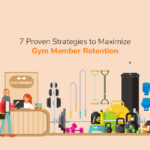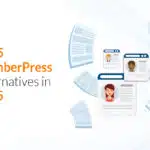
Optimizing User Lifecycle Management through Automation
In the face of rapid digital transformation, businesses are constantly looking for ways to streamline operations and enhance their customer experience. One of the key ways to achieve this is through automation to optimize user lifecycle management.
The term user lifecycle refers to the different stages a user goes through in their relationship with a business from initial contact to becoming a loyal customer. User lifecycle management involves managing user data, interactions, and touchpoints at each stage to ensure a seamless experience. This article will explore how automation can improve customer lifecycle management, specifically in the areas of subscription, customer, and user access lifecycle management.
Stages of the User Lifecycle
Before delving into the different ways that automation benefits consumer lifecycle management, it is important to understand the different stages involved in this lifecycle. Typically, the user lifecycle is composed of four stages:
1. The Acquisition Stage
The user lifecycle starts with the acquisition stage, where the user encounters a problem or pain point that prompts them to search for a solution, leading them to discover and decide to engage with the product or service offered by your business. This can happen through different channels such as social media marketing, organic search engine queries, referrals, paid advertisements, etc.
2. The Onboarding Stage
After a user responds to a call to action and expresses interest in a business, they move into the onboarding stage. In this phase, users create an account, provide their details, and begin to engage with the business.
3. The Engagement Stage
The engagement stage involves the period when the user actively utilizes the business’s products or services. This stage is critical as it puts your business’s value to the test and decides whether the customer will stick around or churn. The business must focus on providing a seamless experience to retain the user.
4. The Retention Stage
The retention stage is where the user becomes a loyal customer and chooses to continue maintaining a transactional relationship with your business. At this stage, the business has demonstrated its worth and must focus on nurturing the relationship and ensuring the customer remains satisfied and in this stage for a maximum amount of time.
The Benefits of Automation in User Lifecycle Management
Now that the basics of the user lifecycle are clear, let’s explore how automation can help optimize each stage to help your business drive revenue growth.
Subscription Lifecycle Management
Subscription businesses rely on recurring revenue from their customers. They must manage the subscription lifecycle efficiently to avoid the problem of customer churn. Automation facilitated through a premium subscription management system can do wonders in saving precious time, ensuring operational accuracy, and creating seamless experiences through effective subscription lifecycle management.
1. Billing Automation
With subscription management software, you can completely automate user billing cycles, ensuring accuracy and timely execution. This drastically reduces the likelihood of errors and delays, which may lead to customer dissatisfaction and high churn. When a subscription is created against an entirely customizable subscription configuration, the process becomes autonomous. Your user is billed and charged exactly at the right time during their cycle without anybody having to lift a finger. This optimizes your recurring revenue stream while providing convenience to your user, who is charged predictably and transparently while enjoying uninterrupted access to your product or service. In this way, billing automation optimizes the engagement and retention stages of the user’s journey with your business.
2. Invoicing Automation
Automation services offered by subscription management hubs also allow you to automate tailored invoices against complex product and subscription configurations. This ensures the user lifecycle consists of error-free, branded, and on-time receipts of all their billing cycles. Invoicing automation is closely linked to billing and optimizes the engagement and retention stages of the user lifecycle as well.
3. Proration
Automatic proration ensures your user is neither undercharged nor overcharged. If your user upgrades/downgrades their subscription, they are only charged what they are owed without any accountants working overtime to ensure there are no payment discrepancies. This is all the more important for businesses scaling up rapidly and is an essential part of user lifecycle optimization. Closely linked to billing, the engagement and retention stages of the user lifecycle are most boosted by automatic proration!
4. Auto Renewals
Automated renewals can simplify the subscription process for customers, reducing friction and improving retention. Setting up an auto-renewing subscription ensures that customers do not have to go through the hassle of manually renewing or converting at the end of a successful trial. This can be a powerful tool to drive conversion rates for businesses offering free trials. Therefore, auto-renewal optimizes the onboarding stage as much as it facilitates the engagement and retention stages of the subscription lifecycle.
User Access Lifecycle Management
User access lifecycle management involves managing the user’s access to a business’s products or services. This is particularly relevant to group subscriptions to SaaS products to give an example. The admin must manage access and usage of group subscriptions. This ensures subscribers have access to the resources they need to succeed, no subscription is being misused and any cost-saving opportunity is fully utilized. Automation can help in the following ways:
1. Provisioning and Deprovisioning
Automation can handle the provisioning and de-provisioning of user access, reducing the need for manual intervention. This simplifies the onboarding and off-boarding process to no end. Automated provisioning ensures productivity is not impeded due to complex access issues and automated de-provisioning is essential to disenfranchise former users from services they should no longer have access to. Automation in onboarding and offboarding users increases efficiency, reduces errors, and cuts costs; thereby optimizing the onboarding experience in your customer subscription lifecycle.
2. Access Requests
Automation can also streamline the process of granting access requests, ensuring that users get access to what they need quickly and efficiently. This reduces the likelihood of delays, which can lead to frustration and user dissatisfaction having negative consequences on the health of the user lifecycle.
Conclusion
User lifecycle management is an essential aspect of any business’s operations. It involves managing user data, interactions, and touchpoints to ensure a seamless experience. Automation can help businesses optimize the management of these lifecycles. This is possible by automating tasks such as billing and invoicing, personalized communications, and user access provisioning, businesses can save time and reduce errors while improving customer satisfaction and retention. As businesses continue to embrace digital transformation, it is important to leverage automation to optimize customer subscription lifecycles. By doing so, businesses can provide a better customer experience and improve their bottom line. Schedule a demo to learn more!










